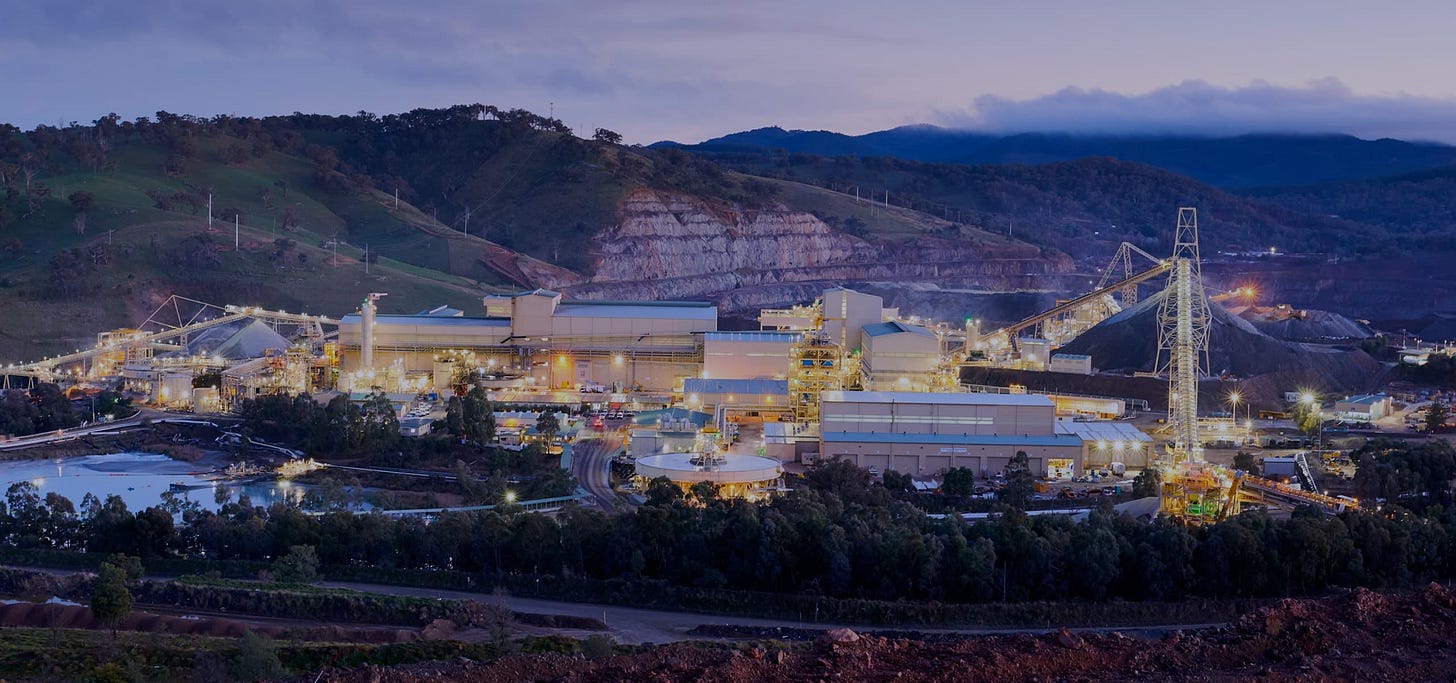New-look Newmont Focused on Safety, Stability and Returns
Record first quarter free cashflow reported
Newmont Corporation (NYSE: NEM) has reported record first quarter free cashflow amid a surging gold price.
The company reported net income of US$1.9 billion for the March quarter and adjusted net income of US$1.4 billion, or US$1.25 per share.
Adjusted EBITDA was US$2.6 billion, almost US$1 billion higher than the same quarter of last year.
The company generated US$2 billion of cash from operating activities, and free cashflow of US$1.2 billion, down 19% and 26% respectively quarter-on-quarter, though both figures were first quarter records.
Newmont CEO Tom Palmer told analysts that a strong operating performance had delivered a robust financial performance.
March quarter production was 1.5 million attributable gold ounces, down 19% due to divestments, and 35,000 tonnes of copper.
All-in sustaining costs rose by 13% to US$1651 per ounce of gold due to lower gold production, higher royalty costs and greater allocation of cost to gold at co-product producing sites due to a previously announced reserve price update, partially offset by inventory changes and lower direct operating costs.
As he did in February, Palmer reiterated that costs were higher than where Newmont would like them to be.
Newmont’s average realised gold price for the quarter rose by US$301/oz to US$2944/oz.
Divestments done
Newmont completed its divestment program with the completion of the sales of Porcupine and Akyem last week.
The program generated up to US$4.3 billion in total gross proceeds, including over US$2.5 billion of after-tax cash proceeds in the current half.
With the program complete, Palmer said the company had three priorities: improving safety performance, stabilising its 11 managed operations and executing on capital returns.
“We’ve been through a pretty significant transformation, acquiring Newcrest, integrating those operations, configuring some of those new operations to deliver their long-term potential, and completing a pretty ambitious divestment program over the last 12 months,” he said.
“So literally, last week, we got our hands on our go-forward portfolio, and we're in an investment cycle.
“We are very, very focused on delivering the safety, cost and productivity performance that this portfolio deserves, irrespective of the gold price, so we enjoy the benefit of the gold prices, but our focus is on delivering the potential of the 11 managed operations that we are currently operating.”
Newmont maintained 2025 guidance of 5.6Moz of gold, including 4.2Moz from its managed tier one portfolio at AISC of US$1630/oz.
Capital allocation
The company made no changes to its capital allocation policy, declaring a first quarter dividend of US25c per share.
Newmont has delivered total shareholder returns of US$1 billion since the start of the year and reduced debt by US$1 billion, including the early redemption of US$928 million of 2026 notes.
The company ended the quarter with US$4.7 billion of cash, above its target of US$3 billion, and US$8.8 billion in total liquidity.
Newmont chief financial officer Karyn Ovelman said the strong balance sheet could allow for early debt repayment, but it had “no specific intent” at this time.
“As we move through the tight gold price environment, coupled with a very uncertain economic time, we will look for opportunities to further buffer the balance sheet,” she said.
“So while we're continuing this reinvestment in the business and returning capital to shareholders with the predictable dividend, coupled with the continued share buyback, if there's opportunities for us to continue to buffer that balance sheet, we'll look to do that.
“We've got a robust share buyback program in place as a result of the gold price, as well as the divestment proceeds, and of course, the dividend is where it needs to be from a fixed, predictable dividend that we believe the market will ascribe value to.”
Growth projects
Palmer said the priority was the commissioning of the Ahafo North project in Ghana in the second half of this year, and it was continuing to progress the Tanami expansion and Cadia block caves, both in Australia.
“But as we commission Ahafo North in the second half of this year, and importantly, as it ramps up and hits its straps in 2026, we've got an opportunity to think about whether there is a project that deserves capital going forward,” Palmer said.
“When I look at our project pipeline, I would argue that Red Chris is in prime position.”
Red Chris in Canada, acquired through the Newcrest takeover, is a relatively small contributor to production now, but there is the opportunity for a much larger block cave operation.
Palmer said Newmont was working on a feasibility study and some early works.
“It's important that we engage with the Tahltan and the British Columbia government to ensure we've got the permits in place, so that when ultimately, if the project washes its face, that we've got all pieces in place to build,” he said.
“But as I look at our project pipeline, look at where we sit with Red Chris, at the quality of the orebody, we've got another Cadia with multiple block caves ready to bring on, and I think it's the Red Chris block cave’s spot to lose in terms of the next project that we action.”
Palmer said the company was also continuing to have “robust” discussions with the Papua New Guinea government over a special mining lease for the Wafi-Golpu gold-copper project, a 50:50 joint venture with Harmony Gold (JSE: HAR).


